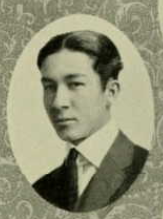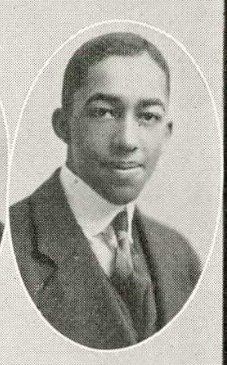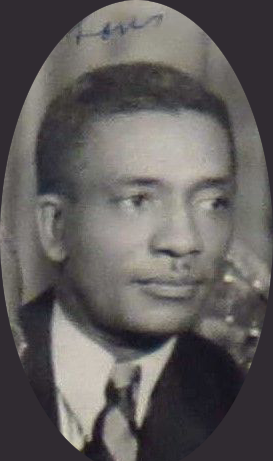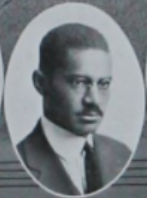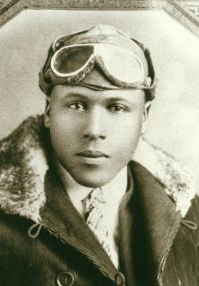James Wilbur (“Jimmy”) Fraser was born 6 March 1901 in South Carolina to James W. Fraser, Sr., a house contractor, and Catherine Gourdine Fraser. A class of 1924 electrical engineering major, Fraser was an avid boxer at Iowa State College and, by October 1923, he was President of the Alpha-Nu Chapter of Alpha Phi Alpha (Tutt, 1923). Additionally, according to J. R. Otis, in Chronicles of Faith, he was an original member of the Interstate Club at 226 ½ Main Street, where he lived for three years (1991).
Jimmy Fraser married Gertrude Heins in 1934. After the birth of their first son, also named James, Fraser became known as James W. Fraser, Sr., as his son took on the Jr. title. In 1935, Jimmy attended the banquet held for Iowa State Alumni at the inauguration of Frederick D. Patterson as President of Tuskegee. At that time, Fraser was reported to be the owner of Fraser Auto Repair Shop in Charleston, South Carolina.
Fraser died on 16 July 1991 in Hurt, Virginia, and is buried in the Gretna Burial Park in Gretna, Virginia.
Sources
Photo Credit: Iowa State University. (1924). 1924 Bomb, p. 89. Retrieved from https://digitalcollections.lib.iastate.edu/islandora/object/isu%3ATheBomb_42683#page/94/mode/2up
Otis, J. R. “Little-known facts about F.D. Patterson.” (1991). In Frederick D. Patterson, Chronicles of faith: The autobiography of Frederick D. Patterson. Tuscaloosa: University of Alabama Press, pp. 187-89.
Tutt, Harold L. (1923, Oct.). Alpha Nu chapter, Des Moines, Iowa. The Sphinx, 9(4), p. 3. ISSUU. Retrieved from https://issuu.com/apa1906network/docs/192300904
